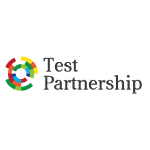While achieving diversity targets is a crucial step, it is equally essential to go beyond mere representation and foster a culture where every individual feels valued, respected, and empowered. In this article, we will delve into the significance of diversity beyond numbers and explore key strategies for building an inclusive workplace culture that celebrates the unique contributions of all individuals.
The Power of Inclusive Environments
Creating an authentic and inclusive environment goes hand in hand with achieving diversity goals. It entails going beyond surface-level differences and embracing the richness of experiences, perspectives, and ideas that individuals from diverse backgrounds bring to the table. In an inclusive environment, everyone feels comfortable being their authentic selves, and their voices are heard and respected. This fosters a sense of belonging, enhances collaboration, and unleashes the full potential of every employee.
Cultivating Cultural Competence
Developing cultural competence is a vital aspect of creating an inclusive environment. Cultural competence involves understanding, appreciating, and respecting the values, beliefs, and customs of individuals from different backgrounds. It requires organizations to invest in cultural sensitivity training programs that educate employees about diverse cultures, biases, and the impact of unconscious bias on decision-making processes. By promoting cultural competence, organizations can ensure that all employees feel included and valued, irrespective of their cultural or ethnic backgrounds.
Building Inclusive Leadership
Leaders play a pivotal role in shaping the culture of an organization. Inclusive leadership involves embracing diversity, leading by example, and creating an environment where all employees feel safe to express themselves and contribute their unique perspectives. Inclusive leaders actively seek out diverse voices, encourage open dialogue, and make decisions that reflect the diverse needs and experiences of their workforce. Organizations should invest in leadership development programs that promote inclusive leadership skills and behaviors, ensuring that leaders at all levels champion diversity and inclusion.
Eliminating Bias in Decision-Making
Bias can seep into various aspects of an organization, including hiring, performance evaluations, promotions, and resource allocation. To create an authentic inclusive environment, it is essential to identify and eliminate bias from decision-making processes. Structured interviews, as opposed to unstructured interviews, provide a more objective and fair assessment of candidates, minimizing the influence of bias. Additionally, implementing diverse panels for decision-making, using objective criteria, and conducting regular audits of decision-making processes can help uncover any potential bias and ensure equitable outcomes.
Furthermore, organizations must comply with legal frameworks such as the Equality Act 2010 to prevent discrimination and promote equality. This legislation provides a robust foundation for organizations to create inclusive environments by addressing discrimination and ensuring equal opportunities for all employees. By adhering to the principles outlined in the Equality Act 2010, organizations demonstrate their commitment to diversity and inclusion.
Fostering Employee Engagement and Belonging
Employee retention, engagement, and job satisfaction are strongly correlated with an inclusive work environment. When employees feel valued, respected, and included, they are more likely to be engaged, productive, and committed to the organization's success. To foster employee engagement and belonging, organizations should create opportunities for employees to provide feedback, actively listen to their concerns, and implement initiatives that address their needs and aspirations. Employee resource groups, mentoring programs, and affinity networks can also play a crucial role in fostering a sense of belonging and connection within the organization.
Continuous Learning and Growth
Creating an authentic inclusive environment requires ongoing learning and growth. Organizations should encourage continuous education and provide resources for employees to expand their understanding of diversity and inclusion topics. This can include workshops, seminars, and online courses that promote awareness, empathy, and understanding. Additionally, creating platforms for open dialogue and knowledge-sharing can foster a learning culture that celebrates diversity and encourages personal and professional growth.
Incorporating 360-degree feedback, organizations can obtain a holistic view of employee performance, including the impact of diversity and inclusion initiatives. This feedback mechanism allows employees to provide input on their experiences within the organization, shedding light on areas for improvement and highlighting success stories. By incorporating the perspectives of a diverse range of employees, organizations can continuously refine their diversity and inclusion strategies, leading to a more authentic and inclusive environment.
Conclusion
Diversity beyond numbers is a journey that organizations must embark upon to create an authentic inclusive environment. It goes beyond meeting quotas and legal requirements and involves building a culture that values and celebrates the diverse backgrounds, experiences, and perspectives of individuals. By cultivating cultural competence, promoting inclusive leadership, eliminating bias in decision-making, fostering employee engagement, and prioritizing continuous learning, organizations can create an environment where all individuals feel seen, heard, and empowered. This not only drives organizational success but also fosters innovation, creativity, and a sense of community that benefits everyone involved. By adhering to legal frameworks such as the Equality Act 2010, organizations demonstrate their commitment to diversity and inclusion, ensuring equal opportunities and a fair working environment for all employees. Together, these efforts create an authentic and inclusive environment that celebrates diversity and propels organizations toward a brighter and more prosperous future.









